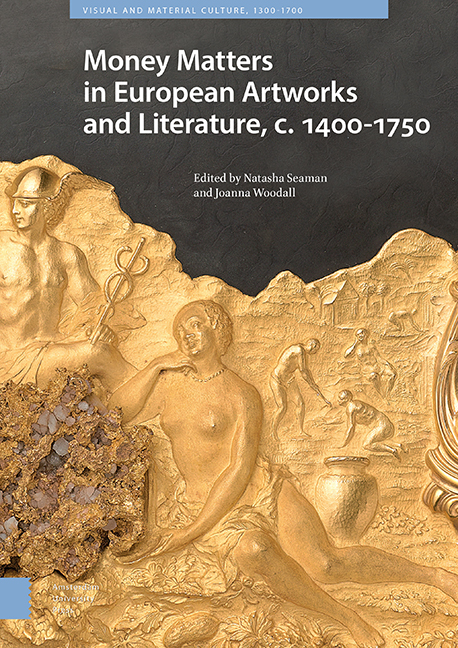3 - Market Stall in Batavia: Money, Value, and Uncertainty in the Age of Global Trade
Published online by Cambridge University Press: 15 September 2022
Summary
Abstract
This chapter explores how A Market Stall in Batavia, recently attributed to Andries Beeckman, constructs an image of the Dutch East India Company's colony for an audience of Dutch burghers. The painting draws on the market setting, familiar from Netherlandish artistic traditions, to convey associations of profitable exchange in its depiction of the town in Indonesia. Focusing on the figure of the Chinese man and the coins in his hands, the chapter argues that these motifs carried multiple connotations, disrupting attempts at a single, positive reading. The use of these multivalent elements results in an ambivalent image that, I contend, offered an apt analogy of the fraught relationship between the Dutch East India Company and the Dutch economy at large.
Keywords: Batavia (Indonesia), money, markets, Dutch East India Company, trade, Asia
A Market Stall in Batavia, now in the Rijksmuseum and newly attributed to Andries Beeckman, presents an elaborate compilation of exotic objects and people from Southeast Asia (fig. 3.1). Dominating the foreground of the sizeable canvas (106 × 174.5 cm) is an array of tropical fruit, with carefully described pineapples,coconut, mangoes, melons and more offering a colourful feast for the viewer’s delectation. Behind this still life arrangement are figures clearly marked as non- European, including a man portrayed with stereotypical Chinese features, and two women and a youth identifiable as Southeast Asian through their darker skin tone and Indonesian dress. The woman standing next to the male figure holds a lacquer box, from which she lifts areca nuts wrapped in betel leaves – an Indonesian and Malay specialty. The picture thus presents a tableau populated by enticing objects of curiosity, located specifically in the East Indies. Despite the emphasis on the exoticism of the individual elements, Dutch viewers versed in Netherlandish artistic traditions would have recognized the coin-counting figure, who appears in multiple contexts in Dutch art, and the use of a market scene as a narrative frame. On one level, the familiar visual language may have helped beholders to make sense of the foreign scene, but on another, the inherent multivalence of the tropes – especially the figure who is handling money – complicates attempts at a definitive interpretation.
Dated to the 1650s or 1660s, Market Stall was created in a period when the Dutch East India Company (Verenigde Oostindische Compagnie, or VOC) had wrested control of the Southeast Asian spice trade from Portugal.
- Type
- Chapter
- Information
- Money Matters in European Artworks and Literature, c. 1400-1750 , pp. 107 - 130Publisher: Amsterdam University PressPrint publication year: 2022



